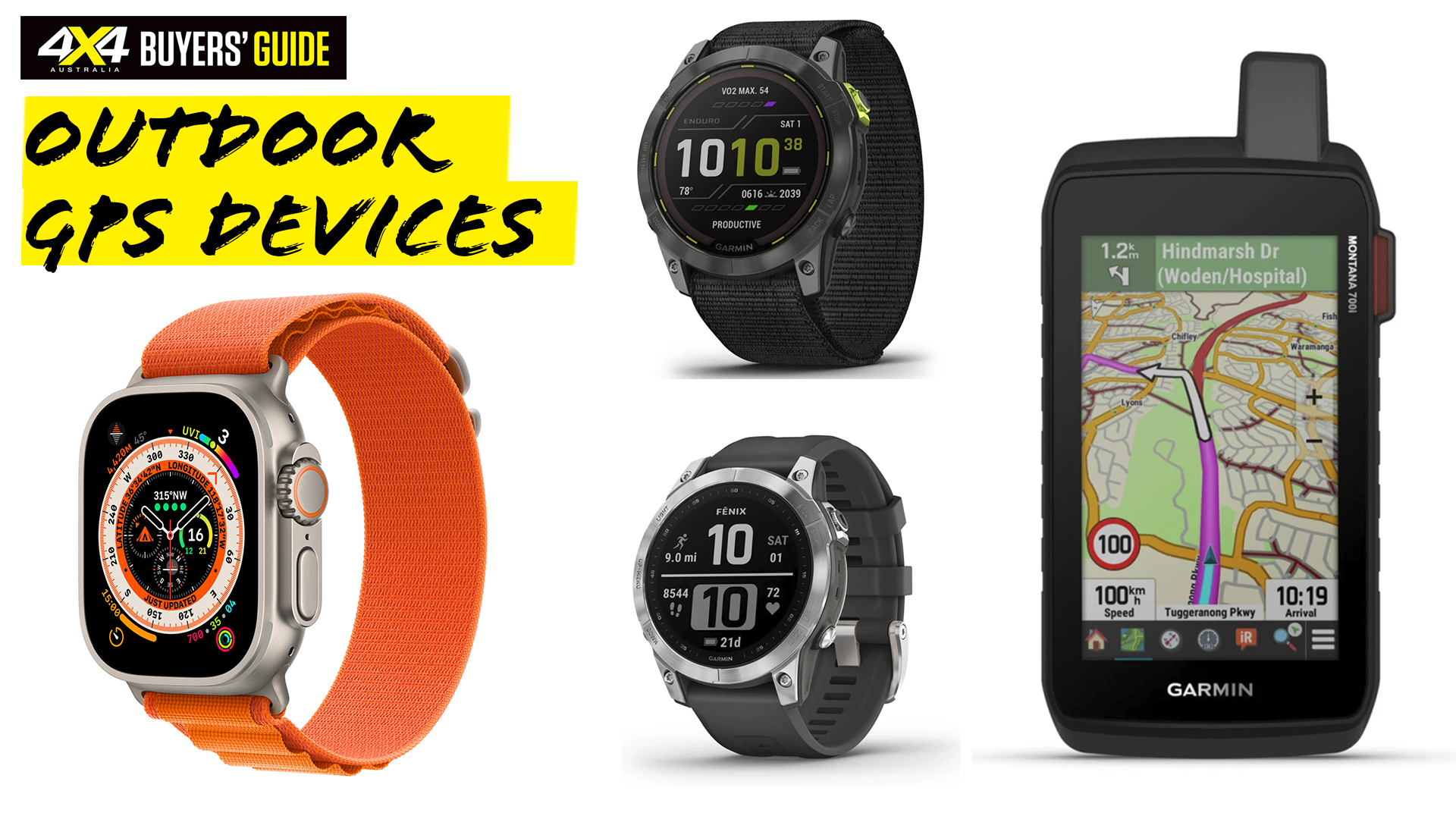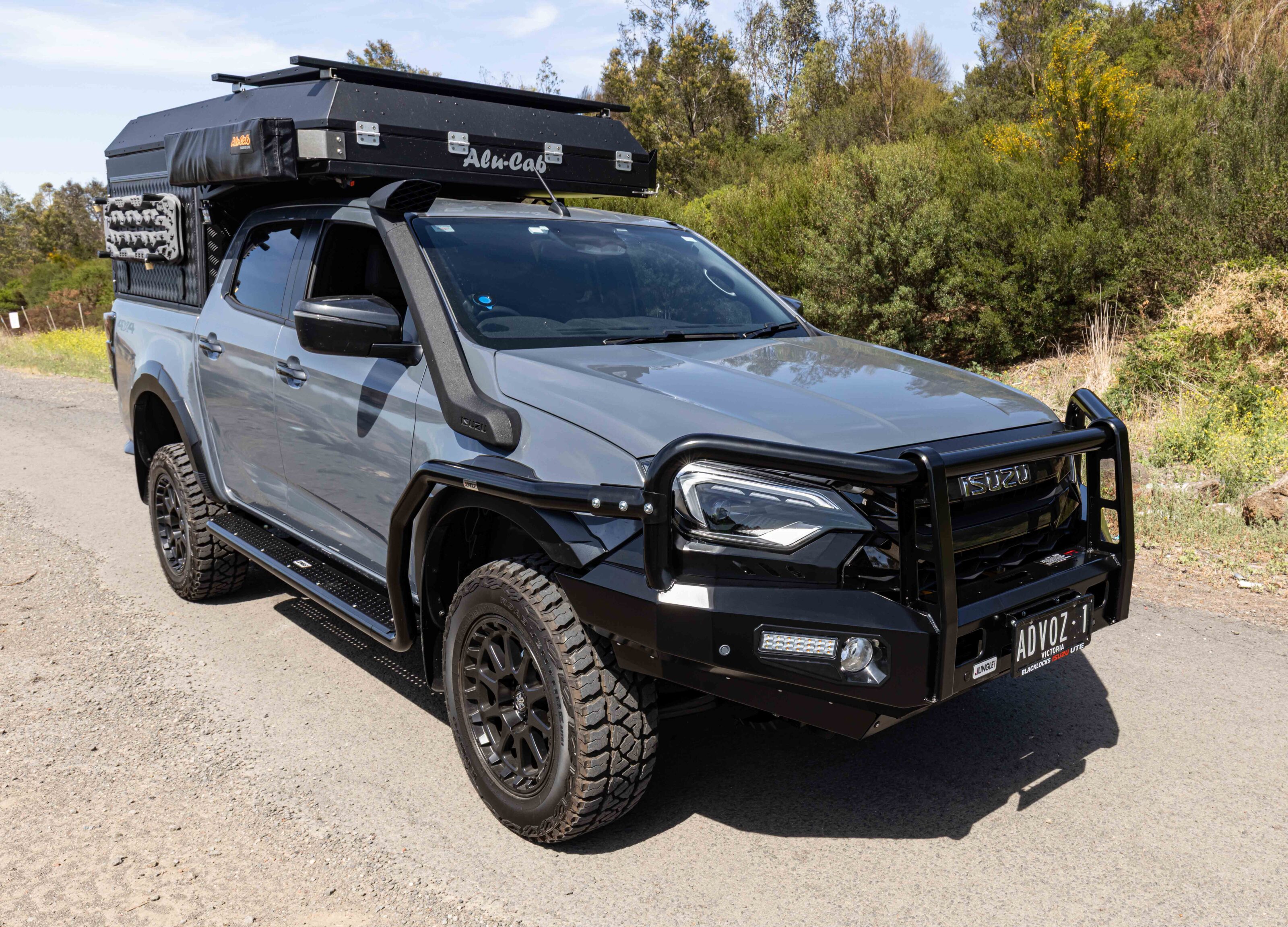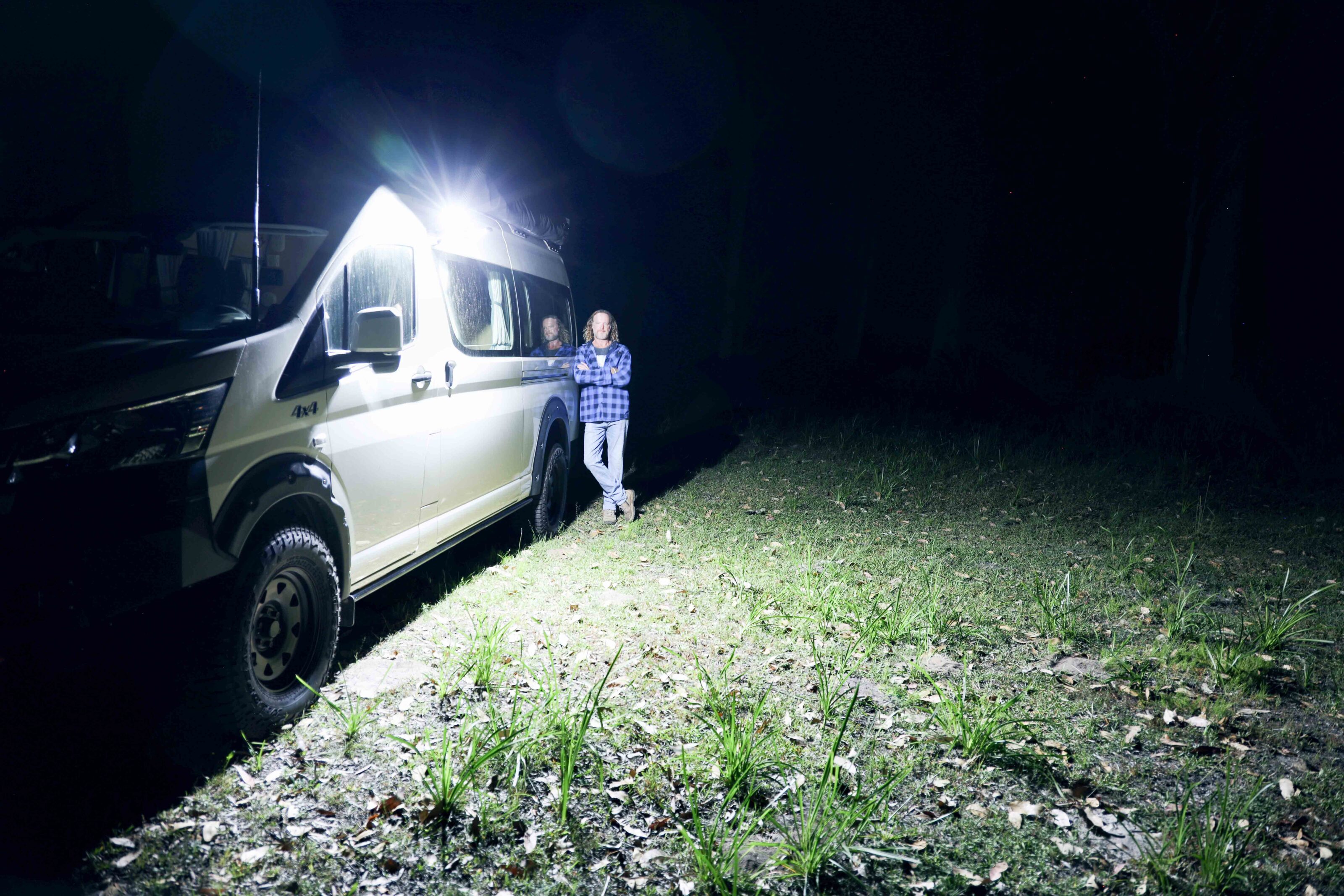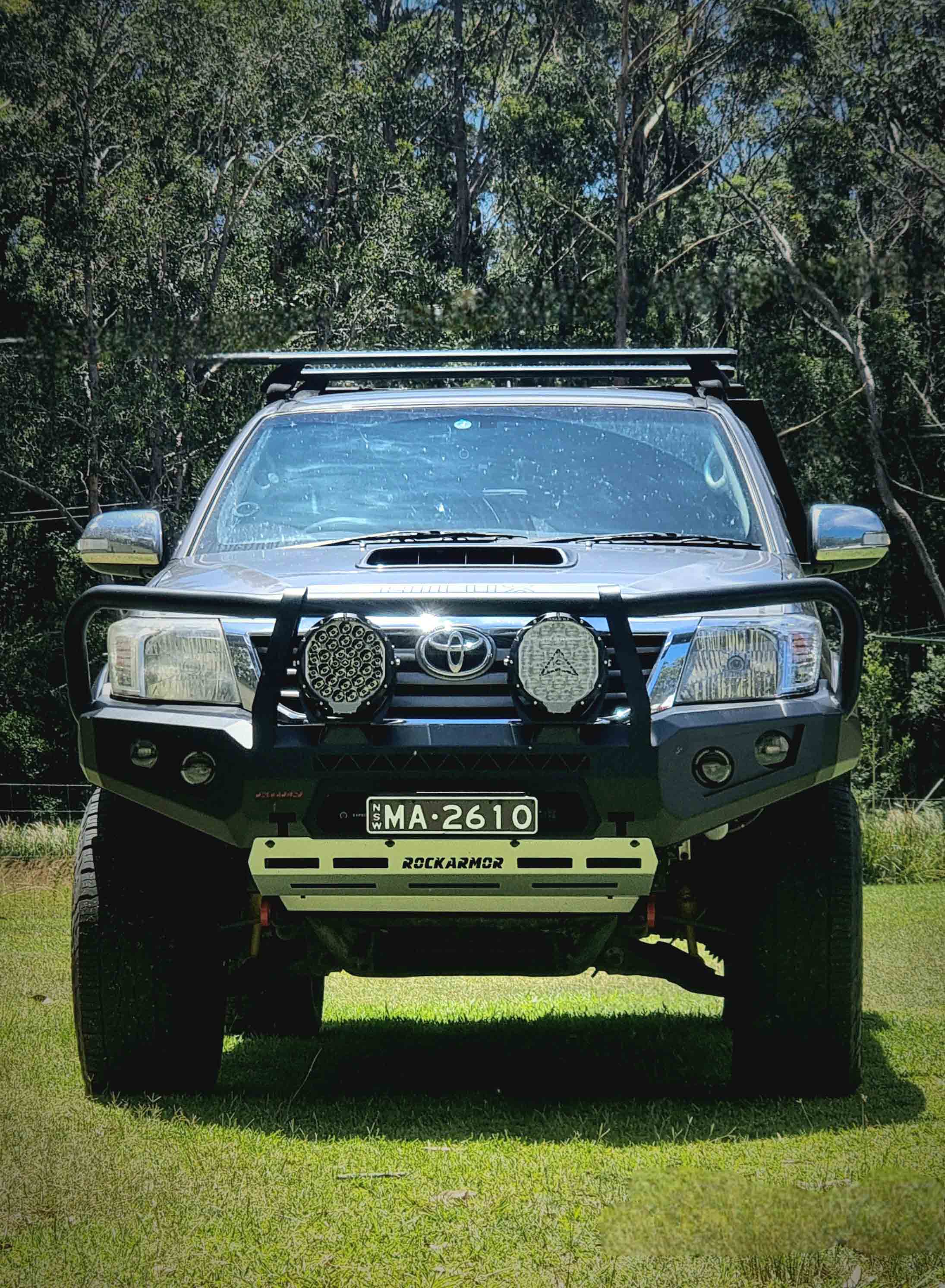The best outdoor GPS device will let you navigate, track your route and monitor your performance wherever your sense of adventure takes you. If you’ve been thinking about getting a GPS device, we’ve reviewed seven of the best from Coros, Wahoo and Garmin.
From a range of watches, handheld and cycling GPS devices, we’ve reviewed the most versatile and functional. Those that are going to give you the best performance across a range of outdoor activities. The basic function of an outdoor GPS is to pinpoint your location, but these devices are capable of a whole lot more.
To find the very best, we’ve compared the main functions of each GPS device, as well as the features, size, weight and battery life. Whether you want to leave the trails behind, explore new destinations or just have a backup safety device – we’ve got you covered with these excellent outdoor GPS devices.
| Type | Screen size | Weight | Battery life | |
|---|---|---|---|---|
| Apple Watch Ultra | GPS watch – touchscreen | 49mm | 61.3g | 36 hours, or 60 hours on low |
| Garmin Enduro 2 | GPS watch – touchscreen | 35.56mm diameter | 70g | 34 days in smartwatch mode |
| Garmin fenix 7S | GPS watch – touchscreen | 33.02mm diameter | 79g | 18 days in smartwatch mode |
| Garmin epix (Gen 2) | GPS watch – touchscreen | 33.02mm diameter | 76g | 16 days in smartwatch mode |
| Garmin Instinct 2 Solar GPS Watch | GPS Watch – Black and White Screen | 23 x 23mm | 53g | 28 days |
| Casio G-Shock G-Squad Pro | GPS watch – touchscreen | 65.6 x 56.3mm | 103g | Approx 36 days |
| Coros Apex Pro GPS Watch | GPS Watch – Touchscreen | 1.2-inch | 59g | 30 days in smartwatch mode |
| Garmin Montana 700i | Handheld GPS – touchscreen | 6.48 x 10.80cm | 410g | 18 hours in GPS mode |
| Garmin GPSMAP 66i | Handheld GPS – colour screen | 3.8 x 6.3cm | 230g | 35 hours at 10-minute tracking |
| Garmin eTrex 32x | Handheld GPS – Colour Screen | 35 x 44mm | 141.7g | 25 hours |
| Wahoo ELEMNT BOLT Cycling GPS | Cycling GPS – Colour Screen | 2.2-inch | 68.38g | 15 hours |
| Garmin Edge 830 Cycling GPS | Cycling GPS – Touchscreen | 2.6-inch | 79.1g | 20 hours |
GPS WATCHES
Apple Watch Ultra
Apple has dived deeper into the outdoor adventure space with its Apple Watch Ultra. The Ultra combines exceptional technology with a host of easy-to-use features, in a GPS watch that you can take just about anywhere. It’s the merging of smartphone and outdoor adventure technology that we didn’t know we needed.
While it may not look too different to previous Apple Watches, the Ultra is made from aerospace-grade titanium and has a flat sapphire crystal display. This toughness will be appreciated when you start throwing yourself along a downhill track or carving up the slopes in winter.
The Ultra is designed with features for hardcore adventurers. Directly appealing to Garmin users with its new scuba-diving capacities and featuring sensors for everything from measuring blood oxygen and ECG readings, to altitude and water temperature.
But you don’t need to be Everest-ready to find a heap of useful features in this latest watch release from Apple. You can use Apple’s CarPlay on the Ultra to navigate on- and off-road, even when you are out of phone range. It also has the ability to detect a serious vehicle accident and call emergency services – and relay the coordinates if the wearer is unresponsive.
The Dual Band capacities make it a new market leader for pinpointing and navigating from your wrist. For exploring the trails you can use navigation apps including All-Trails and TopoMaps+. Plus, you can customise the Ultra’s bright orange Action button for instant access to whatever features you need the most at the touch of a button.
For hiking or riding trails, the Compass app has been redesigned, with options for either an analogue or digital view, plus options to see your latitude, longitude and elevation. Backtrack mode lets you retrace your steps, which is a standard feature across most GPS devices now. And no doubt a very handy one should you step off track.
Depending on what type of adventure you have planned, there are three interchangeable wristband options: a soft and flexible Trail loop band, a high-strength Alpine band and an Ocean band made from flexible fluoroelastomer.
What makes this GPS watch stand out from the others is the seamless communication features that Apple watches are known for. You can be camping and still call, message and send voice memos and emails from your wrist – without needing to be paired with a phone. Apple has even included a new wind-reducing technology to ensure clear phone calls wherever you are.
Downsides to the Ultra are that you will need an iPhone (if you don’t have one already) and the battery life is not – yet! – up to scratch for serious expeditions. The Ultra’s battery can last 36 hours – just a day-and-a-half – in normal mode, or 60 hours in Low Power mode, but you will lose functionality. While this is double the battery life of the previous Series 8, it is still only practical for a weekend adventure and not a long expedition.
Having said that, if battery power is not an issue for you, you are going to love the seamless functionality and endless features of the Apple Watch Ultra. Watch out Garmin – Apple is diving deeper.
Things we like
| Not so much
|
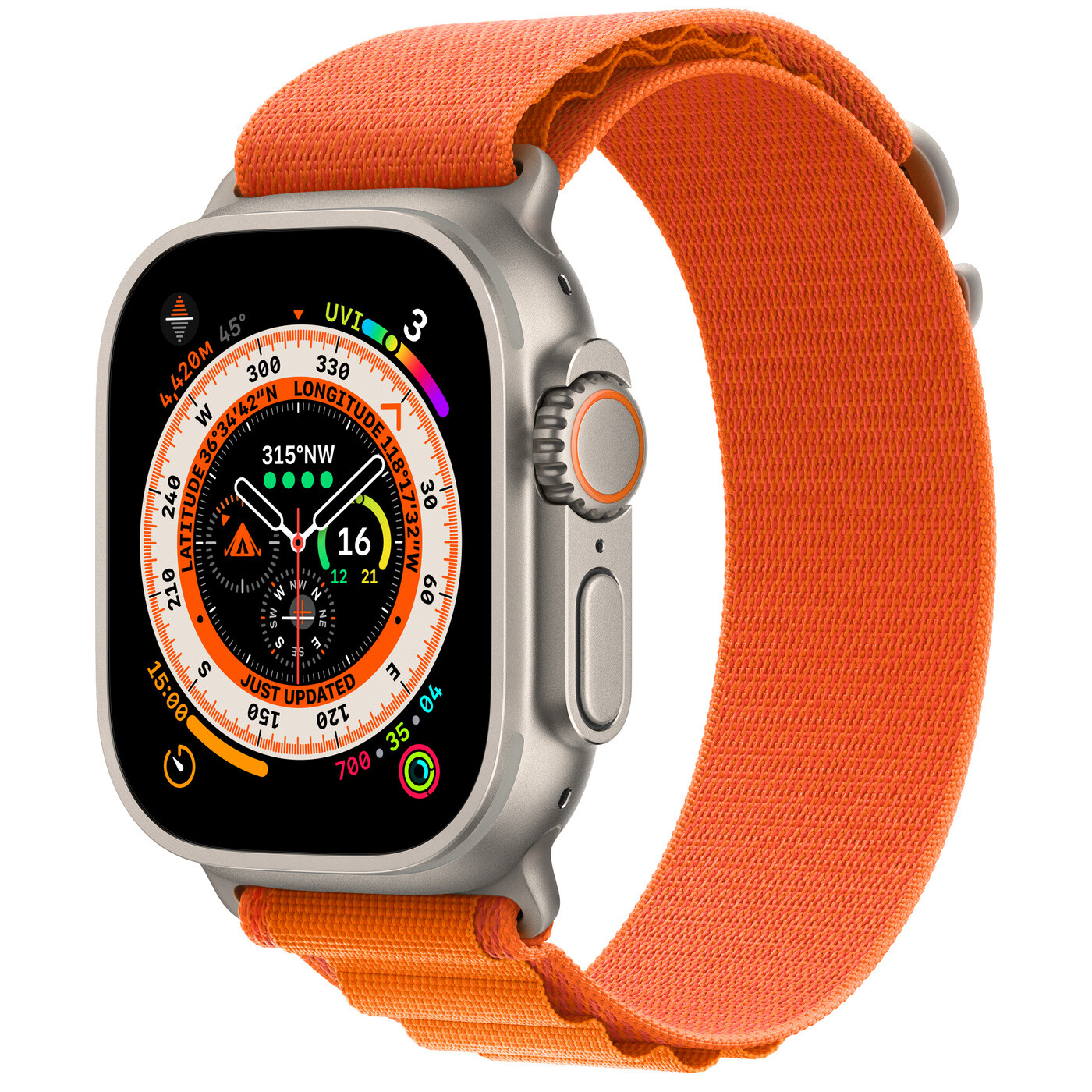
Specifications:
- Type: GPS watch – touchscreen
- Screen size: 49mm
- Weight: 61.3g
- Battery life: 36 hours, or 60 hours on low
- Type: GPS watch – touchscreen
- Screen size: 49mm
- Weight: 61.3g
- Battery life: 36 hours, or 60 hours on low
Garmin Enduro 2
If premium is the only way you roll, Garmin’s Enduro 2 is waiting to grace your wrist. It is rugged but lightweight and filled with the best features and sensors, yet still boasts excellent battery life. If you are not short on cash to splash on a GPS watch, the Enduro 2 is calling.
Garmin has made significant improvements to its Enduro GPS watch with this second version. It now has a touchscreen and topographical maps included – plus upgraded battery life. It boasts 34 days of battery life in smartphone mode, with an extra 12 days when solar charging via the tough Power Sapphire glass.
The topographical maps make navigating a breeze, with inclusions for trails and skiing. Plus, with the new touchscreen interface it is easier to find the right metrics and features for your day. It also has the bonus of a super bright flashlight, with adjustable light levels, perfect for camping – or those time you’re stuck without a torch.
The premium titanium construction brings all the toughness you need for the great outdoors, yet feels light on your wrist – because it is! If you need a watch for surfing or trail running, the 70g Enduro 2 is the lightest GPS watch we’ve reviewed.
All the Garmin features and functions are loaded on the Enduro 2 including Incident Detection, TracBack, navigation and elevation tools. There’s even a new SatIQ feature that automatically chooses the best GPS mode for your activity in order to conserve battery life.
Things we like
| Not so much
|
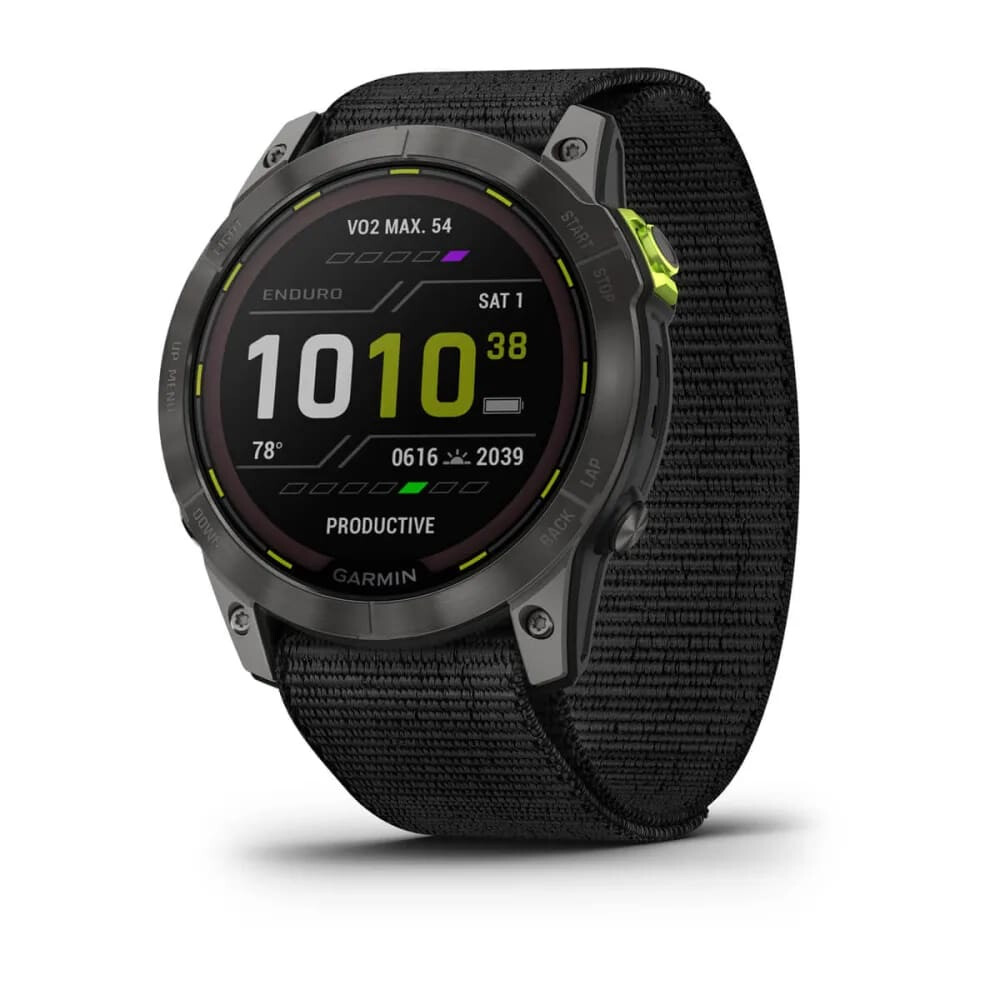
Specifications:
- Type: GPS watch – touchscreen
- Screen size: 35.56mm diameter
- Weight: 70g
- Battery life: 34 days in smartwatch mode
- Type: GPS watch – touchscreen
- Screen size: 35.56mm diameter
- Weight: 70g
- Battery life: 34 days in smartwatch mode
Garmin fenix 7S
Garmin’s fenix 7S should be your choice of GPS watch if you need a companion for extended backcountry adventures. The longer battery life, solar charging capability and all-round toughness make the best choice for off-grid trips.
The fenix 7S is housed in a fibre-reinforced polymer case and has been tested to USA military standards for thermal, water and shock resistance. Garmin’s Power Glass keeps the battery topped up during the day and will significantly extend the battery life. Despite its durability the responsive touchscreen is easy to use and navigate through the many different features on this watch.
If you do want a GPS watch for longer expeditions, and will rely on it when out of phone range, the fenix 7S can give you a lot more battery life – and therefore peace of mind – than many other watches. You can get 57 hours of battery life in GPS mode, 18 days in smartwatch mode, and up to 57 days in battery-saver mode.
You won’t be shy on features for outdoor recreation – the GPS connects to three satellite systems for accurate pinpointing and navigation. Waterproof rating makes it a good option for surfing, kayaking and fishing.
The 3-axis compass, altimeter and barometer can be used for hiking, climbing and mountaineering. It includes Garmin’s Incident Detection feature and can be used for sharing your live location – good safety features to have when exploring remote areas.
As a day-to-day smartwatch you can use Garmin Pay, get phone notifications and load your favourite tunes. For tracking exercise and sharing results, the fenix 7S pairs with smartphones and can be used with the Garmin Connect app.
This GPS watch is customisable with smaller or larger case sizes. Plus, if you don’t need extended battery life, and want to spend less, there is a version (fenix 7) without solar charging capabilities.
Things we like
| Not so much
|
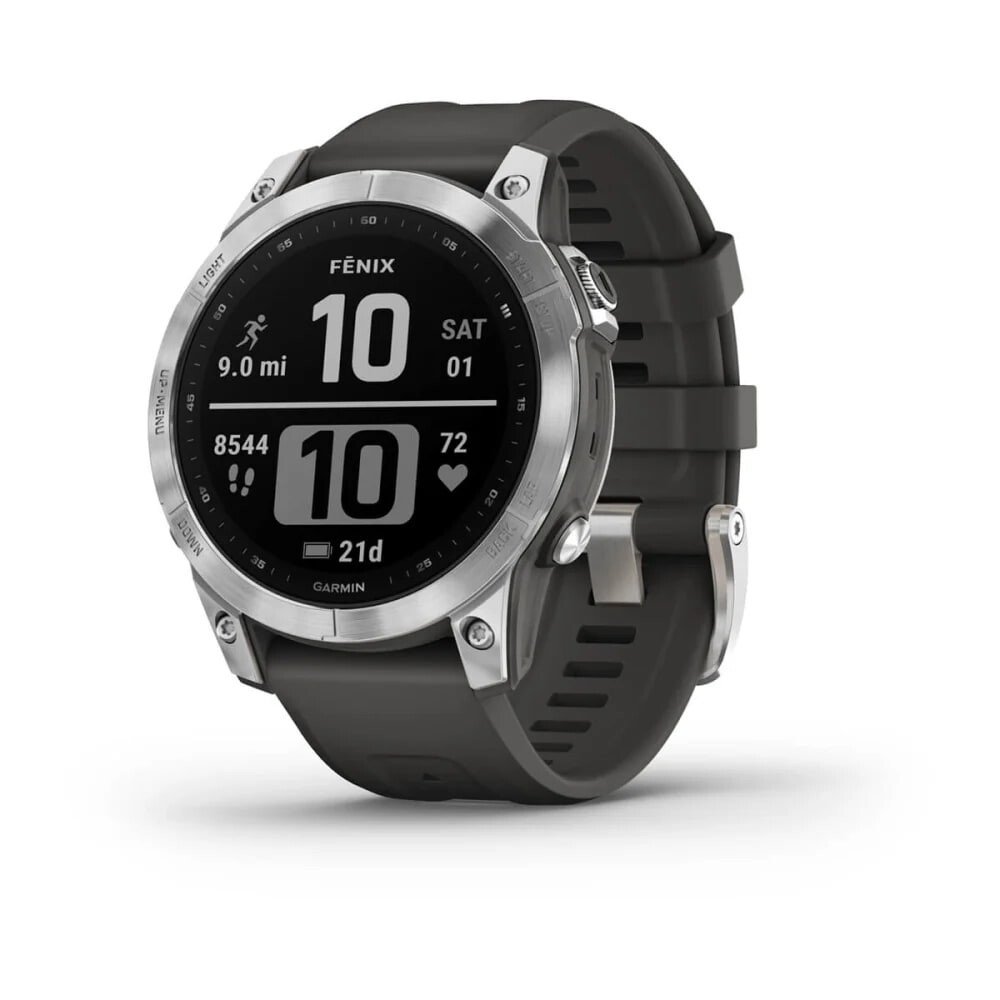
Specifications:
- Type: GPS Watch – touchscreen
- Screen size: 33.02mm diameter
- Weight: 79g
- Battery life: 18 days in smartwatch mode
- Type: GPS Watch – touchscreen
- Screen size: 33.02mm diameter
- Weight: 79g
- Battery life: 18 days in smartwatch mode
Garmin epix (gen 2)
The epix (Gen 2) has all the best Garmin features wrapped up in a super shiny, super sleek GPS watch. If you like your gear to be stylish, as well as built tough – it’s a great option.
The main point of difference in the epix (Gen 2) is the AMOLED screen which is easier to read in broad daylight. It means graphs, charts and maps are easy to read in all light levels – and at a glance, if you need to keep your eyes on the trail.
Compared to other Garmin models, the epix (Gen 2) doesn’t have solar charging, and seems geared more towards monitoring health and performance. However, it is loaded with presets for climbing, hiking, surfing and many more outdoor activities.
As you’d expect from a Garmin watch, it also has great satellite connectivity and navigation tools. There is an option for topographic maps for navigating and it has a flashlight that isn’t really suitable for the trails, but would no doubt come in handy in the tent when camping.
The sleek screen on the epix (Gen 2) does come with a downside – it drains your battery faster. However, there are a number of power-saving modes you can use it in, including Expedition mode which records your GPS coordinates less frequently and deactivates sensors to extend the battery life.
Things we like
| Not so much
|

Specifications:
- Type: GPS Watch – touchscreen
- Screen size: 33.02mm diameter
- Weight: 76g
- Battery life: 16 days in smartwatch mode
- Type: GPS Watch – touchscreen
- Screen size: 33.02mm diameter
- Weight: 76g
- Battery life: 16 days in smartwatch mode
Garmin Instinct 2 Solar GPS Watch
Garmin’s Instinct 2 Solar watch has the potential for unlimited battery power and all the right features for your outdoor adventures. Garmin is the market leader when it comes to GPS and it’s hard to go past their reliability and performance.
The Instinct 2 Solar is one of the most durable watches in the Garmin range, with thermal, shock and water resistance built in. The case is made from fibre-reinforced polymer, while the screen has a scratch-resistant, high-contrast display for use in all levels of light.
In terms of GPS navigation and tracking, there is a built-in compass and barometric altimeter. It also connects to multiple satellite systems for more accurate coverage. You can use the Garmin Explore app to plan your route in advance, and the TracBack feature will help you return to your starting point if you get lost.
Additional features include heart rate, activity and stress monitoring, using a range of preloaded activity profiles. The battery life is up to 28 days in smartwatch mode. However, because it is solar rechargeable, you can charge while out on the trail, and won’t have to worry about low battery levels ever again.
Things we like
| Not so much
|
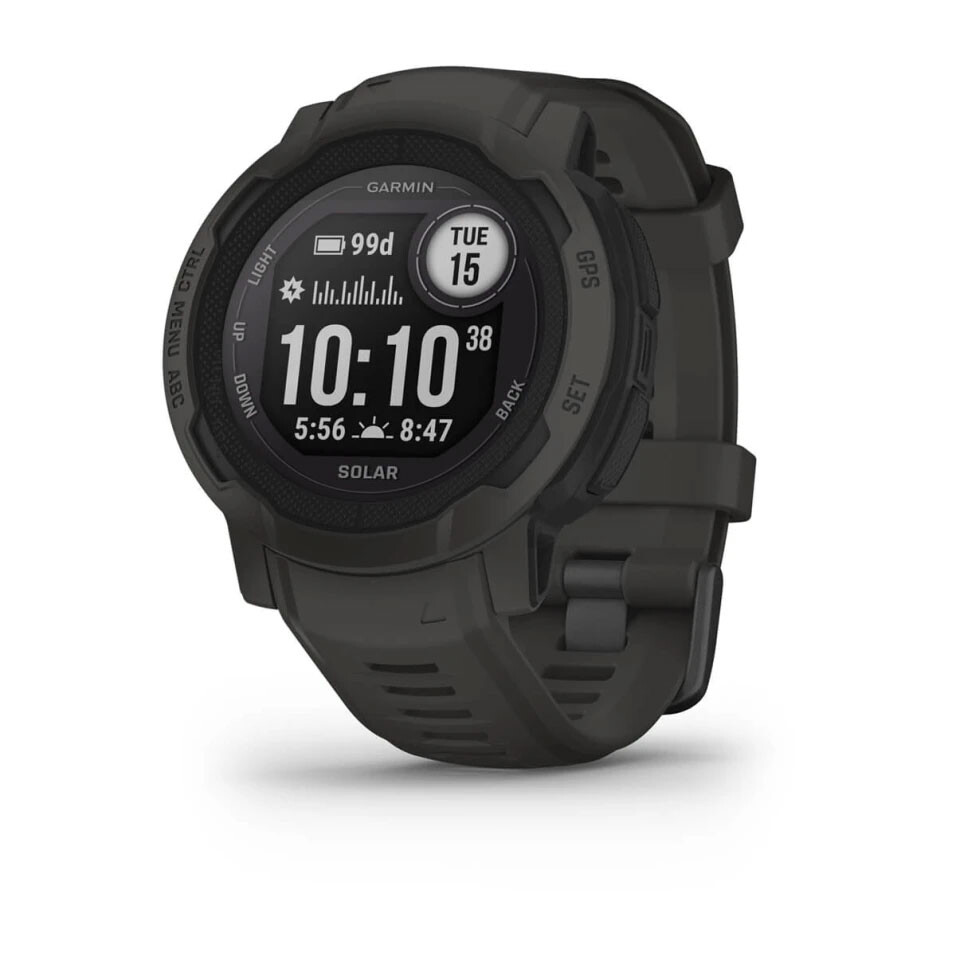
Specifications:
- Type: GPS Watch – Black and White Screen
- Screen size: 23 x 23mm
- Weight: 53g
- Battery life: 14 days in smartwatch mode
- Type: GPS Watch – Black and White Screen
- Screen size: 23 x 23mm
- Weight: 53g
- Battery life: 14 days in smartwatch mode
Casio G-Shock G-Squad Pro
Casio’s G-Squad Pro is for the weekend wanderer – a mid-range GPS watch with the right features to take you from your day-to-day, to out on the trails.
The G-Squad Pro is built tough with a titanium back and aluminium and urethane case. The smartwatch functions are boosted by Google’s Wear OS and it can be used with the G-Shock app on your phone to access a lot more features.
While the G-Squad Pro is geared up for exercising, it also has some handy features for explorers. The GPS pairs with three satellite systems, and along with the compass and sensors for altitude and barometric pressure, allows you to navigate trails and accurately detect your position.
From trail running and riding, to surfing, snowboarding and hiking – this watch can keep up with your weekend activities. What it can’t do is stay charged for long periods of time.
The battery life is approximately 36 hours on normal use, so if you are planning longer adventures and need a GPS watch that can go with you – the Coros and Garmin options will be better options.
Things we like
| Not so much
|

Specifications:
- Type: GPS Watch – Touchscreen
- Screen size: 65.6 x 56.3mm
- Weight: 103g
- Battery life: Approx 36 hours
- Type: GPS Watch – Touchscreen
- Screen size: 65.6 x 56.3mm
- Weight: 103g
- Battery life: Approx 36 hours
Coros Apex Pro GPS Watch
The Coros Apex Pro is a versatile outdoor GPS watch – that you can wear on just about any adventure. For a lower price, you still get great functionality and features that are usually reserved for higher-end GPS watches.
Coros builds devices for the outdoors, with constant upgrades to include the latest technologies. Its Apex Pro is an upgrade of the original Apex GPS watch and has an improved antenna design for better connectivity. It can connect to five major satellite systems and has dual-frequency GPS for better accuracy in tricky areas.
Other upgrade features include a pulse oximeter, altitude advisory and touchscreen, all which give this watch a whole lot more functionality. You can switch between the various modes and settings using both the touchscreen and outer digital dial.
The navigation system is boosted by features such as the barometric altimeter, compass, checkpoints, return to start navigation and alerts if you go off-route. It also has incredible battery life, ranging from 40 hours to 30 days depending on the profile you are using.
Things we like
| Not so much
|
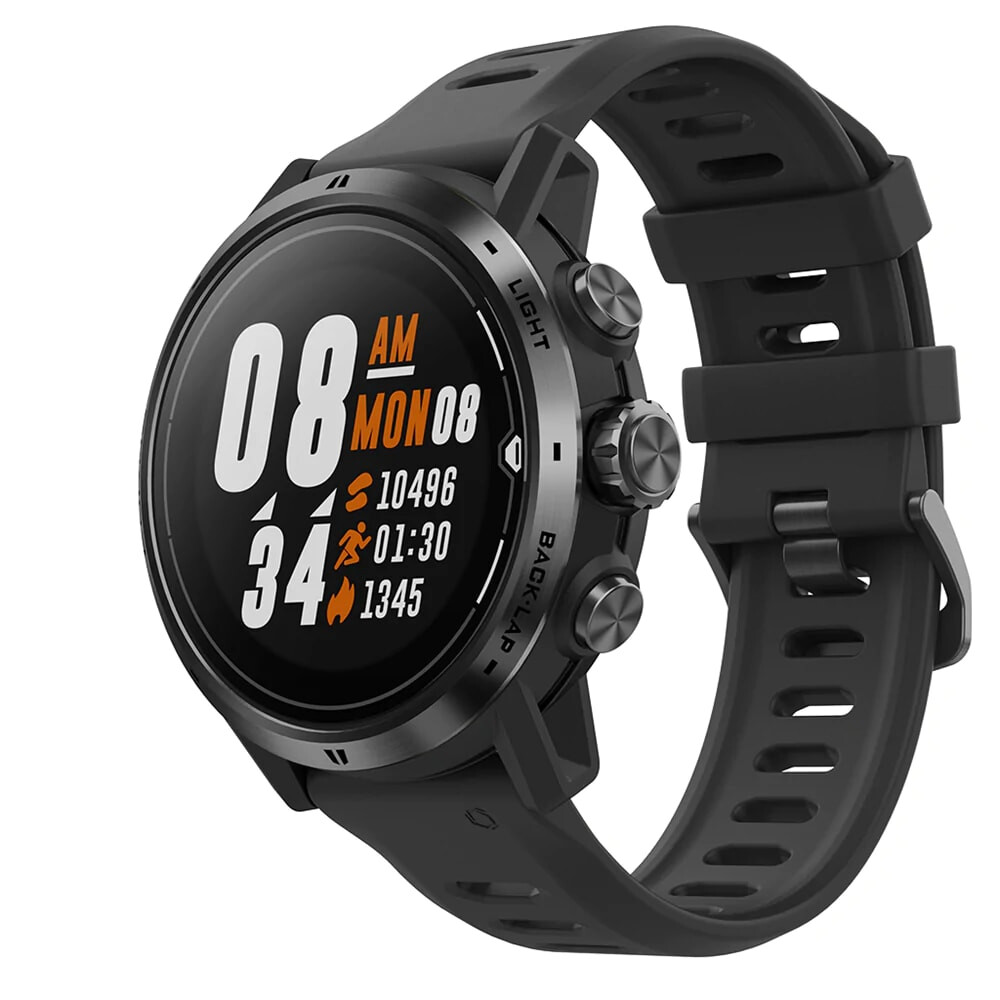
Specifications:
- Type: GPS Watch – Touchscreen
- Screen size: 1.2-inch
- Weight: 59g
- Battery life: 30 days in smartwatch mode
- Type: GPS Watch – Touchscreen
- Screen size: 1.2-inch
- Weight: 59g
- Battery life: 30 days in smartwatch mode
Handheld GPS
Garmin Montana 700i
The Montana 700i handheld GPS by Garmin can take you from hiking your local trails to off-road expeditions. With a large touchscreen, topographic maps preloaded and InReach communications – it is the ideal navigating companion.
If you want a small GPS device to slip in your pocket, this is not the one for you. The Montana 700i is big. Its 6.48 x 10.80cm touchscreen is a 50 per cent increase on other Montana models. This is a GPS you can mount on your dashboard or throw in your backpack. Or get bigger pockets.
Despite the large screen, the Montana 700i is ready to face the elements. It is durable and water resistant, plus the screen has been designed to use in wet conditions or while wearing gloves. It also boasts a full QWERTY keyboard so you can bang out messages faster and easier.
With Garmin’s InReach communications already loaded, you can use this GPS for messaging or 24/7 SOS in case of emergencies. It also includes a barometric, altimeter, compass and weather app.
The Montana 700i uses two satellite systems for accurate navigation. Plus the preloaded Australian and New Zealand topographic maps have roads, tracks, trails and many points of interest – perfect for a road trip.
Things we like
| Not so much
|
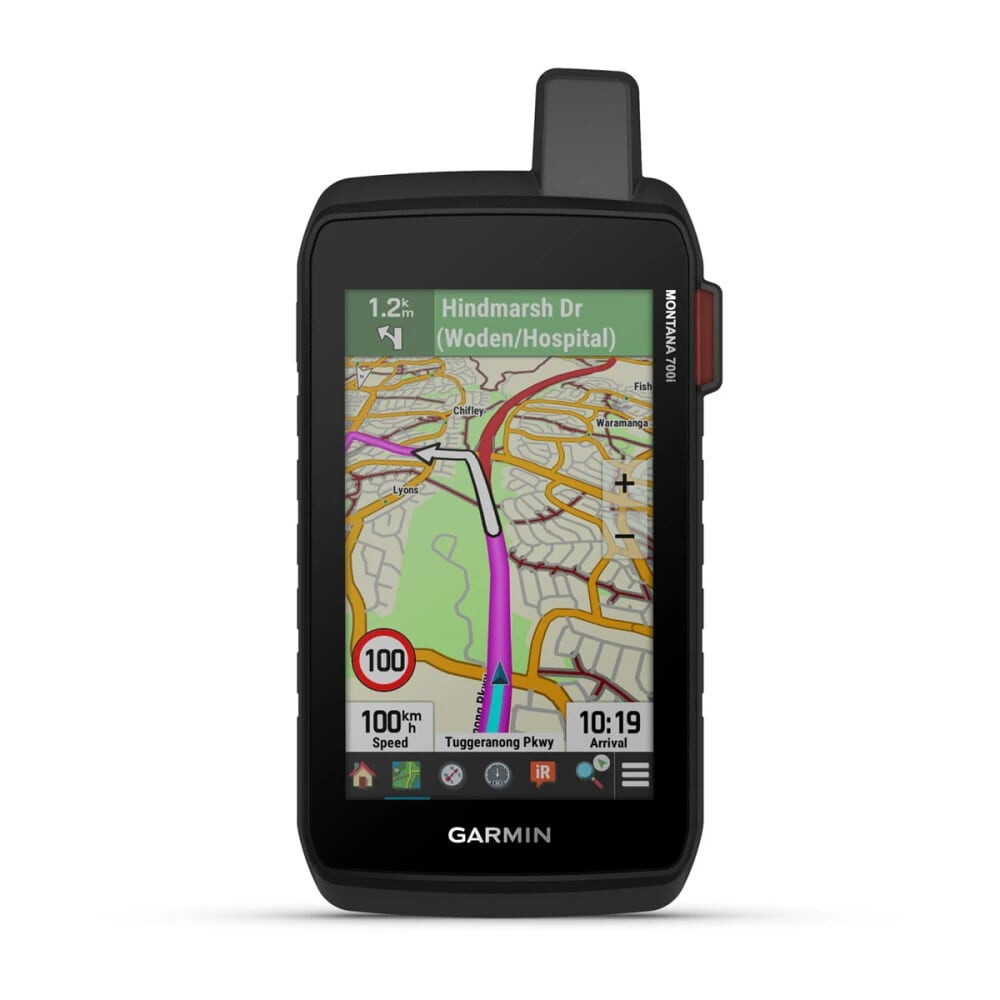
Specifications:
- Type: Handheld GPS – touchscreen
- Screen size: 6.48 x 10.80cm
- Weight: 410g
- Battery life: 18 hours in GPS mode
- Type: Handheld GPS – touchscreen
- Screen size: 6.48 x 10.80cm
- Weight: 410g
- Battery life: 18 hours in GPS mode
Garmin GPSMAP 66i
If, to you, a GPS is a reliable, touchscreen-free device that sits in the palm of your hand, not on your wrist – Garmin’s GPSMAP 66i might be what you’re after.
While other GPS units are getting flashier and more high-tech, the GPSMAP 66i is a rugged and reliable (we’re not saying ugly) device. This is the dependable GPS that you need in your kit if you venture out of phone range often.
The GPSMAP 66i uses both GPS and GLONASS for fast and accurate navigation and tracking. It has topographic maps preloaded, with plenty of points of interest and access to BirdsEye Satellite Imagery without needing a subscription.
For off-road adventures or stepping out on the trails, the 66i GPS has great durability and a long battery life – 35 hours in tracking mode and up to 200 hours in Expedition mode. You also have access to Garmin’s InReach technology for two-way communication and SOS alerts.
Things we like
| Not so much
|
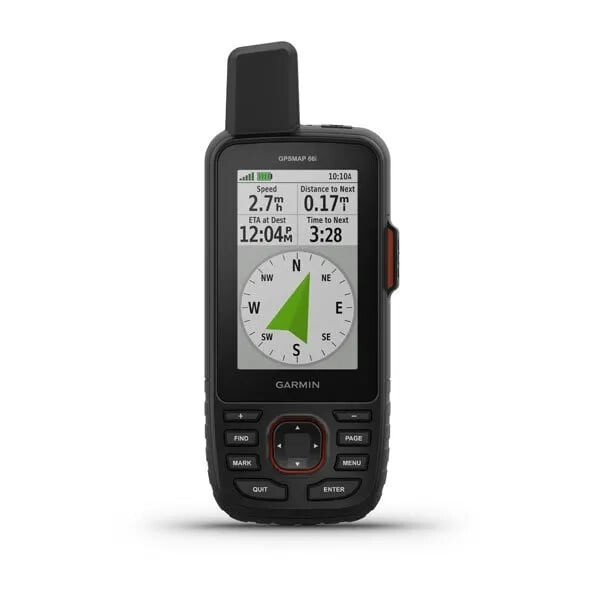
Specifications:
- Type: Handheld GPS – colour screen
- Screen size: 3.8 x 6.3cm
- Weight: 230g
- Battery life: 35 hours at 10-minute tracking
- Type: Handheld GPS – colour screen
- Screen size: 3.8 x 6.3cm
- Weight: 230g
- Battery life: 35 hours at 10-minute tracking
Garmin eTrex 32x
A couple of models up from the eTrex 10, Garmin’s eTrex 32x is a mid-range handheld GPS with a great price point. Its connectivity, navigation systems and the inclusion of topographic maps make it suitable for a variety of outdoor adventures.
The eTrex 32x uses GPS and GLONASS systems for navigation and tracking. It also has a barometric altimeter and compass, and is preloaded with topographic maps. In addition, you can subscribe and download satellite imagery to integrate with your maps for more accurate mapping and navigation.
This is a device that you can use hiking, cycling, or even on ATVs and boats. You can also mount it in your vehicle to navigate while driving. The preloaded topographic maps include roads, trails and points of interest, plus you can upload extra maps if needed.
This GPS is built tough, with IPX7 waterproofing, a colour screen and toggle. The colour screen gives more clarity to the maps and data, while still being readable in sunlight. If you’re after a mid-range handheld GPS for navigating, the eTrex 32x provides the right features at a great price.
Things we like
| Not so much
|

Specifications:
- Type: Handheld GPS – Colour Screen
- Screen size: 35 x 44mm
- Weight: 141.7g
- Battery life: 25 hours
- Type: Handheld GPS – Colour Screen
- Screen size: 35 x 44mm
- Weight: 141.7g
- Battery life: 25 hours
Cycling GPS
Wahoo ELEMNT BOLT Cycling GPS
Wahoo brings simplicity to its ELEMNT BOLT cycling GPS through good design, usability and enough features to satisfy any rider. It’s the second evolution of Wahoo’s ELEMNT – which was the first app-enabled GPS bike computer.
The upgrades to the original cycling GPS by Wahoo include refined features and a sleek integrated computer and mount. This stylish GPS can be used with Bluetooth, ANT+ and Wi-Fi, meaning you can connect to a whole range of apps for better usability and more functionality.
The device itself is easy to use thanks to the quick set up, and it has a customisable interface so you can load it with your own preferences. The latest edition has colour added to the screen for improved graphics and an ambient light sensor to ensure the screen is readable in all light conditions.
The ELEMNT BOLT contains 16MB of memory and can store maps and routes, as well as reroute on the go. It has 15 hours of battery life and is compatible with USB-C charging so you can boost the battery even as you are riding.
Things we like
| Not so much
|

Specifications:
- Type: Cycling GPS – Colour Screen
- Screen size: 2.2-inch
- Weight: 68.38g
- Battery life: 15 hours
- Type: Cycling GPS – Colour Screen
- Screen size: 2.2-inch
- Weight: 68.38g
- Battery life: 15 hours
Garmin Edge 830 Cycling GPS
If you want Garmin value in a cycling GPS, the Edge 830 device will give you just what you are after. It is a touchscreen cycling computer with colour display and plenty of features packed in. One of the impressive new features is the ability to pair the Edge 830 with Garmin’s Varia rear-view radar and lights – for extra safety on the road.
The Edge 830 connects to GPS, GLONASS and GALILEO satellite systems and can be used for mapping and navigation, as well as for rerouting. The integrated Bluetooth and ANT+ allow you to connect to other devices and integrate a whole host of programs including Strava.
You can monitor your health and performance with features built for tracking VO2 max, hydration and recovery. There are also plenty of inbuilt metrics for on-road cycling as well as trail riding and mountain biking. It has a 2.6-inch touchscreen and three buttons which make it very easy to use while riding.
Overall, Garmin’s Edge 830 beats out the competition with its huge array of features and excellent functionality. If you don’t mind a higher price tag, we think you’ll find this cycling GPS well worth the investment.
Things we like
| Not so much
|

Specifications:
- Type: Cycling GPS – Touchscreen
- Screen size: 2.6-inch
- Weight: 79.1g
- Battery life: 20 hours
- Type: Cycling GPS – Touchscreen
- Screen size: 2.6-inch
- Weight: 79.1g
- Battery life: 20 hours
How we review products
4X4 Australia has been reviewing four-wheel drive vehicles, aftermarket products and camping gear for more than 40 years. When looking for the best outdoor GPS devices in Australia, there are some things that are essential to choosing the best device for your outdoor needs.
When we compared each of the GPS devices in the list with others on the market, we looked at the functions, size, weight, battery life and price. We also searched for additional features that make these GPS devices stand out from the rest.
We looked at hundreds of user reviews and drew on our own experience with outdoor GPS devices to make sure our recommendations are for the best on the market.
Disclosure: When you buy through our links, we may earn a commission. We also include products that we do not earn a commission from.
Buyers’ Guide to Outdoor GPS Devices
Types of outdoor GPS devices
There are a lot of outdoor GPS devices on the market in Australia. To choose the best one, you really need to consider what you are going to use it for. We’ve reviewed three different types of outdoor GPS devices – watches, handheld and cycling – with an aim to find the most versatile and functional ones on the market.
GPS watches
GPS watches allow you to have navigation, tracking and performance monitoring functions, all in a compact device on your wrist. They are most commonly used for tracking performance during outdoor activities, but they can also be used to navigate while hiking, riding, climbing or even skiing.
An entry-level GPS watch will allow you to track your speed and distance, in order to evaluate your performance afterwards. However, they are not always suitable for complex navigation purposes.
A more advanced GPS watch will allow you to navigate on and off trails, as well as monitor your performance in real time. They may also feature training modes and heart-rate monitoring, making them more versatile to be used across a range of outdoor activities.
Handheld GPS devices
Also known as a hiking GPS, a handheld GPS can be used for navigating almost anywhere. A handheld GPS device is most commonly used for hiking, trail running, climbing or mountaineering where there is no phone reception.
A basic handheld GPS will be able to pinpoint your location and track your route as you hike/run/climb. They usually come with very basic maps and allow you to upload a route to the GPS before you set out. SOS alerts and satellite messaging are great safety features to have included, but they usually require a subscription.
As you go up in price, there are plenty more features to add to handheld GPS devices. Navigation is a key one, including being able to set a route while you are out on the trails. Features like a compass and barometric altimeter will give you more accuracy while navigating. The inclusion of topographic maps or satellite imagery will vastly improve the user experience as well.
Cycling GPS devices
Cycling GPS devices, also known as cycling computers, are designed to mount on the front of your bike and use while you are riding. Navigation, tracking and performance monitoring are the main reasons to use these GPS devices.
An entry-level cycling GPS will allow you to upload a route before you start pedalling, as well as track your ride. Generally, it has features that allow you to monitor your speed, distance and overall performance.
A more advanced cycling GPS gives greater versatility out on the road or trails with features like rerouting, touchscreens and metrics for different styles of riding. Rerouting is key if there is an obstruction or if you take a wrong turn – as the GPS will allow you to get back on track.
What to consider before buying an Outdoor GPS device
When buying an outdoor GPS device, you want to make sure it is going to meet your needs in terms of durability, connectivity and price. Whatever type of GPS device you are planning to buy – watch, handheld or cycling – here are some things you should look for.
Size and Weight
The size and weight of an outdoor GPS is important. Ideally, it will be lightweight so you can wear it, carry it or mount it easily, without it being a burden to use. However, you also need to be able to see what’s on the screen clearly, which can be harder on smaller devices. Try to look for a device that is portable, but doesn’t limit your capacity to navigate with maps or see important information at a glance.
Touchscreen, Toggle or Buttons
GPS devices will generally come with either a toggle or buttons for navigating through the software. Buttons and toggles are easier to use in wet or cold conditions as they are not affected by rain and can be used while wearing gloves. However, a lot of new models feature touchscreens. Touchscreens will use more battery power – but they are generally easier to read and have the same usability as a smartphone.
Battery Life and Charging
The battery life and charging options of a GPS are something you need to check before buying. The longer the battery life the better, however, most GPS units will specify the battery life for the device while it is being used in different modes. It’s a good idea to consider what mode you will use the most, then check the battery life and charging options.
Durability and Waterproofing
All outdoor GPS devices will have different levels of durability. Consider what conditions you plan to expose the device to (including potential unplanned conditions) and find a GPS that is durable enough to meet your needs. To do this, check the materials it is made from and also the waterproofing level. In general, GPS devices with touchscreens are less durable and more likely to have screen damage than other devices.
Satellite system Connectivity
If a GPS device connects to more than one Global Navigation Satellite Systems (GNSS) it will greatly increase the speed and accuracy of your GPS features. The main three satellite systems that most devices will potentially use are:
- GPS – American satellite system
- GLONASS – Russian satellite system
- GALILEO – European satellite system
Wireless Connectivity to your Smartphone
A GPS device that connects to your smartphone offers a lot more versatility in how it can be used. Many GPS units have a smartphone app that allows you to use extra functions for navigation, tracking and on-route performance monitoring. Look for GPS units that have Wi-Fi, Bluetooth or ANT+ connectivity to get the most out of your device.
Price
Prices can vary drastically between GPS devices in Australia. To ensure value for money, it’s better to choose a GPS device from a reputable brand – such as the ones we have reviewed. It’s also important to consider exactly what you intend to use the device for. You might just save a few hundred dollars by selecting a device with only the features and functionality that you will actually use.

